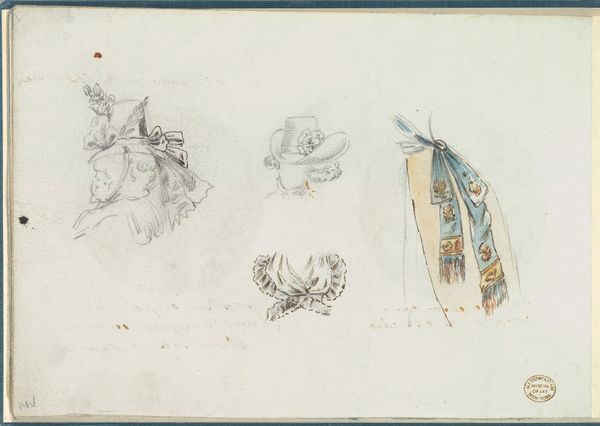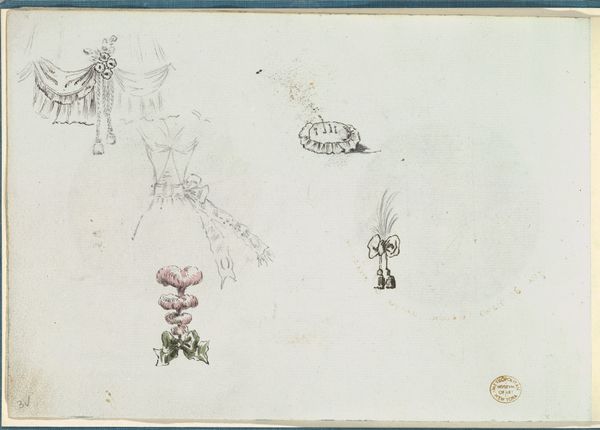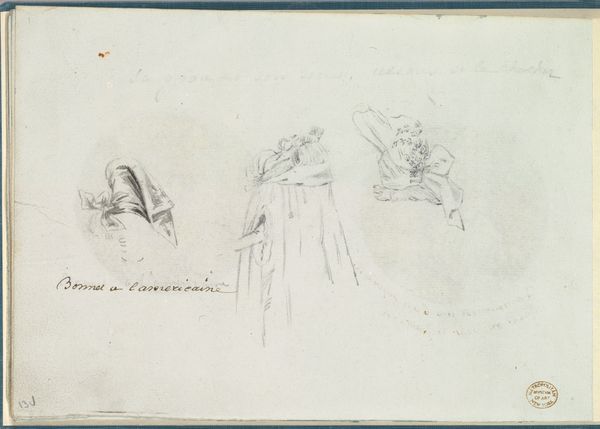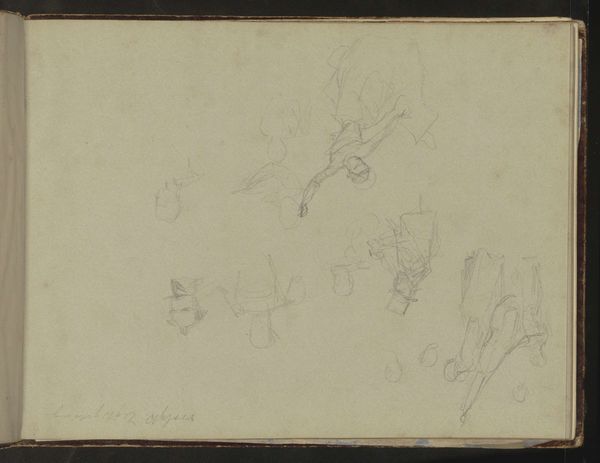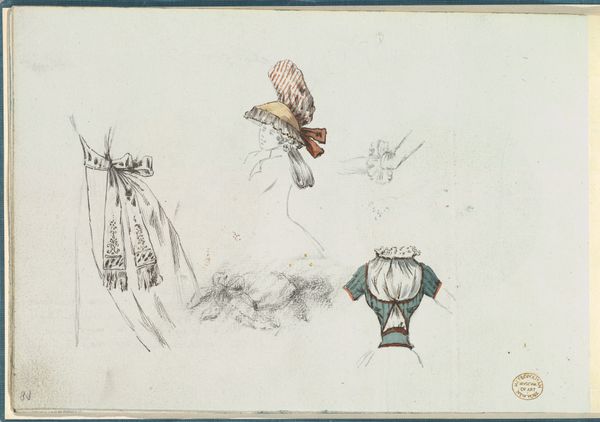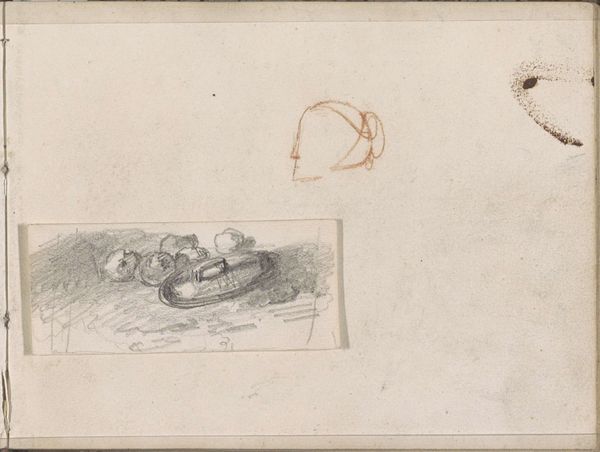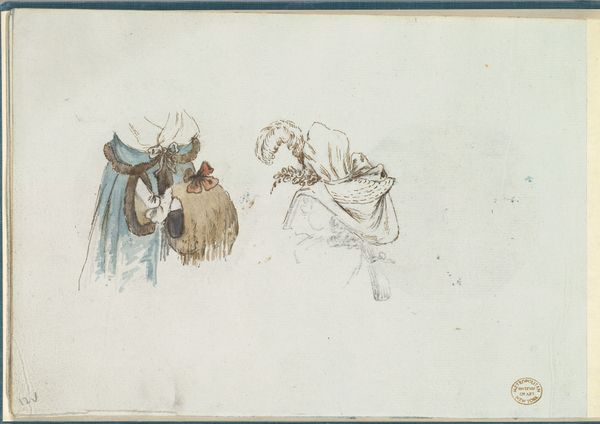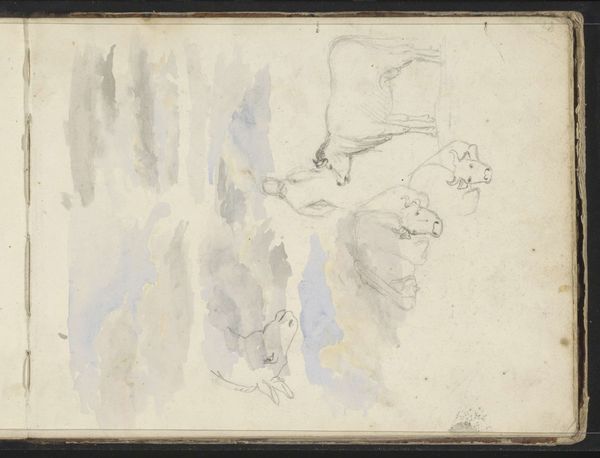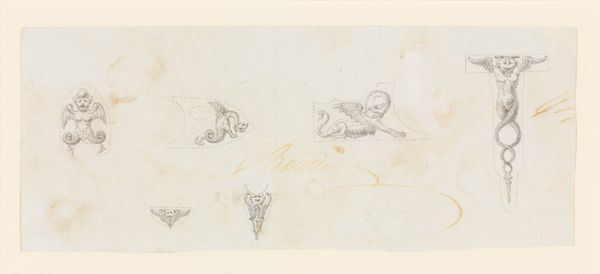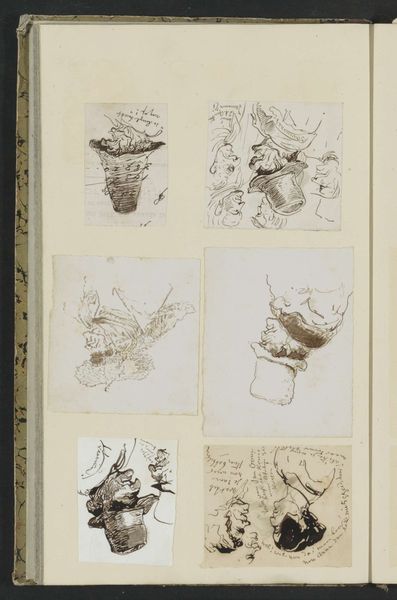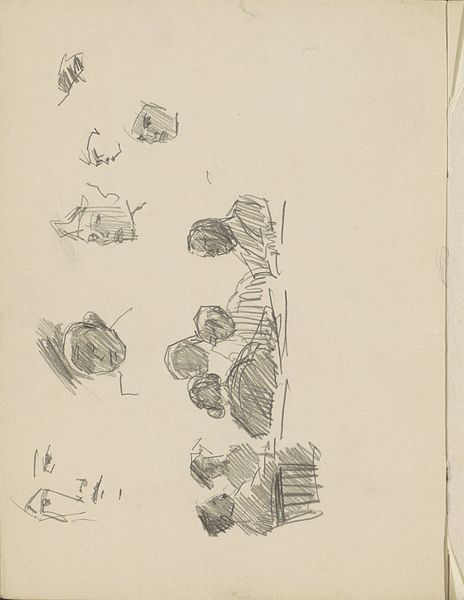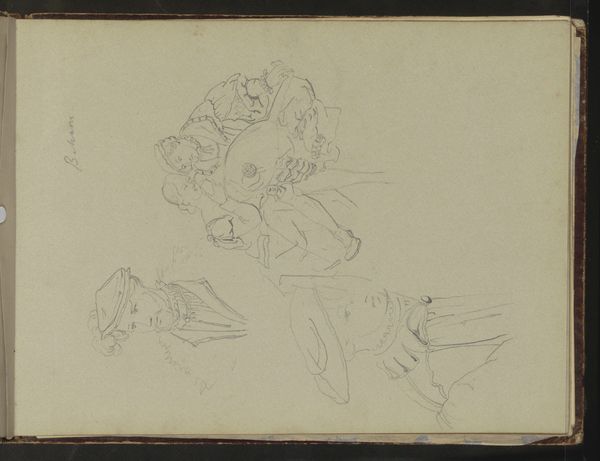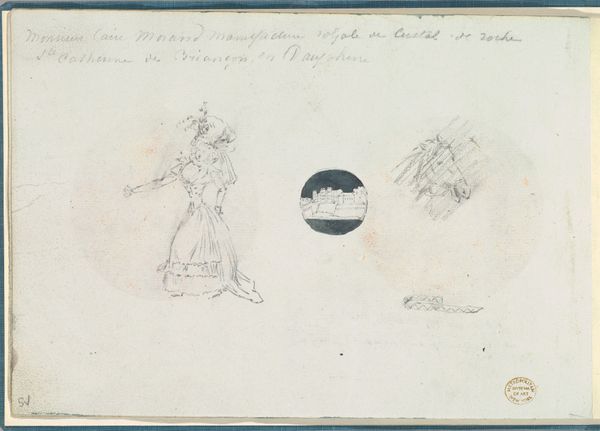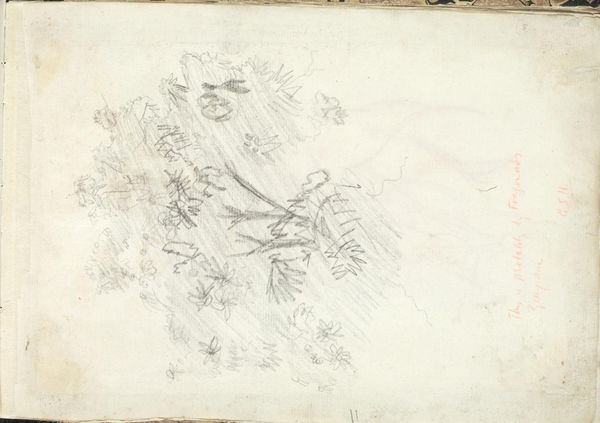
Four Costume Design Sketches of a Woman, a Basket, a Collar, and a Sleeve 1785 - 1790
0:00
0:00
drawing, paper, watercolor, pencil, architecture
#
portrait
#
drawing
#
paper
#
watercolor
#
pencil
#
watercolour illustration
#
academic-art
#
architecture
Dimensions: Sheet: 6 11/16 x 9 15/16 in. (17 x 25.3 cm)
Copyright: Public Domain
This sheet of sketches was made anonymously, and its original date and context remain unknown. However, the inscription "Coiffure à la Levantine" suggests a French origin, reflecting the late 18th-century European fascination with the "Orient." The drawing depicts costume elements: a woman's head with elaborate hairstyle, a basket, a collar with a bow, and a sleeve. How do these elements create meaning? We see the emphasis on luxurious fabrics, intricate designs, and exaggerated forms. The sketches likely served as preparatory designs for theatrical costumes or aristocratic fashion. The late 1700s in France was a time of rigid social hierarchy, and fashion played a crucial role in displaying status and wealth. Sumptuary laws regulated who could wear certain fabrics or styles. Costume design was therefore highly significant. To fully understand these sketches, we must explore fashion history, theater design, and the social history of 18th-century France using sources such as fashion plates, theater archives, and social commentaries. The meaning of art is always dependent on its social and institutional context.
Comments
No comments
Be the first to comment and join the conversation on the ultimate creative platform.
